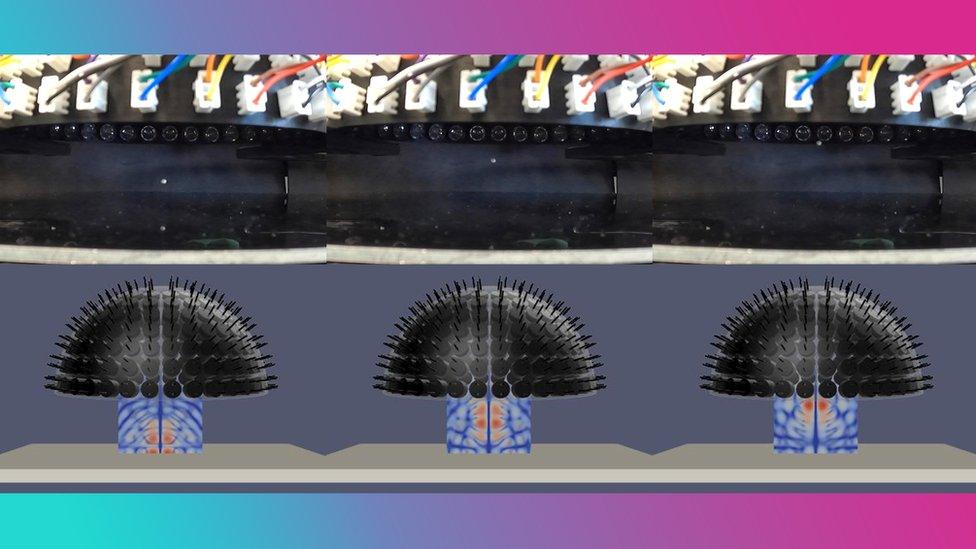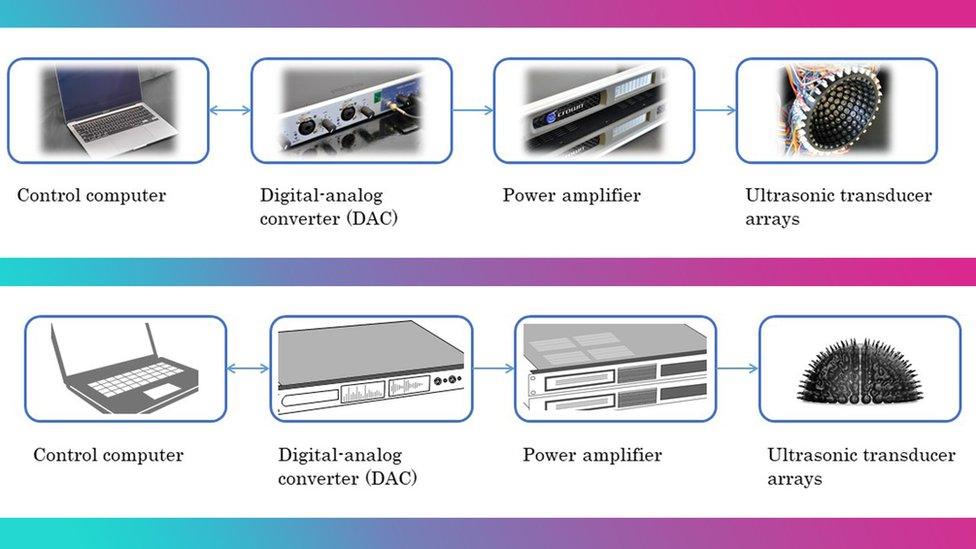Science: Object moves with the power of sound
- Published
- comments

If you look really, REALLY closely you can see a tiny little ball floating in mid-air!
It might sound like magic, but this story is very real and might just mess with your mind!
Scientists at Tokyo Metropolitan University in Japan have made objects lift up into the air (levitate) without touching them.
Shota Kondo and Kan Okubo, scientists at Tokyo Metropolitan University, created a technology which uses sound waves to move small objects without touching them.
It's a new method, named "acoustic tweezers", and uses sound waves to move things.
Confused? Don't worry, we've got all the details below. Read on to find out!
Levitating objects

Sound waves beam out from the transducers which line the hemisphere (a sphere cut in half)
The tweezers method using optical forces (beams of light) has previously been used to move microparticles around (which are really, really small) but the team of scientists at Tokyo Metropolitan University have now discovered a way to lift objects several millimetres in diameter - like a polystyrene ball.
While that still sounds tiny, a ball a few millimetres wide is a lot bigger than a microparticle - so this is a pretty exciting development.
How does it work?

The acoustic tweezers work inside a 120mm-diameter hemisphere (a sphere cut in half), which is lined with 180 small transducers (devices which convert energy from one form to another - in this case, into sound).
The transducers release sound waves and as the waves come together it creates an "acoustic trap" which moves objects within a small area.
This technique has previously needed very complicated, individual sound waves coming from each transducer to work, but the researchers have developed a method which simplified the sound waves.
The team explained that while they could pick up a polystyrene ball several times the method wasn't perfect as it didn't work every time.
- Published17 December 2019

- Published22 July 2021

